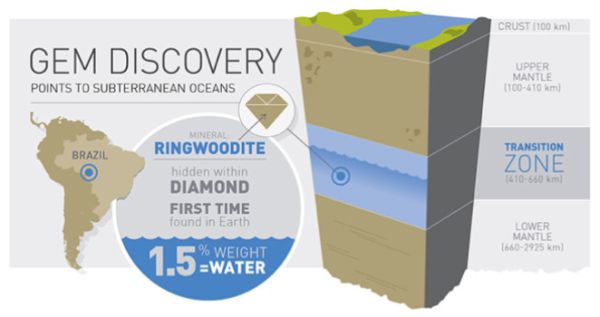Emergence of water is the best part in the origin of life on the planet Earth. Without water, Earth might not have looked like what it is today, but the question how water first appeared on our Blue Planet is still a mystery. The most popular theory suggests that the collision of enormous icy comets with dry and inhospitable Earth, resulted in deposition of water on the surface.
However, a study conducted by experts at The Ohio State University proposes that a sequence of geologic processes taking place in the Earth’s interior may also have played a role in the genesis of water, along with icy comets coming from the far reaches of our solar system.
Earth’s mantle contained oceans
Researcher and Associate Professor of Earth Science at The Ohio State University, Wendy Panero says that presence of water in a liquid state on Earth’s surface makes it the unique planet in our solar system. It is also the sole planet to have active plate tectonics. After all, water in the Earth’s mantle is crucial for plate tectonics, which makes Earth habitable.
Findings from the latest study suggests that the Earth contained oceans of water in its mantle since its inception and for billions of years, this water is being supplied to the planet’s surface through plate tectonics.
The idea that supports this hypothesis is that water is present in everyday rocks, though not visible to our eyes. These dry rocks contain hydrogen atoms confined within natural voids and crystal defects. Almost all minerals have oxygen, some of them also contain hydrogen, and therefore, probably certain chemical reactions caused the fusion of two elements, resulting in water formation. Moreover, Earth’s mantle solely makes up 80% of the planet’s total volume, considering the individual rock contains few hydrogen, Earth has the capacity to create water enough to fill the oceans.
Minerals releases water
In the lab, researchers associated with the study, compressed variety of minerals that are commonly found in the mantle, to examine their hydrogen storing capacity. They found a mineral known as ringwoodite, present 325-500 miles below the Earth’s surface, the part also known as ‘transition zone’ and garnet. But the exact process through which these minerals releases water without finishing its reserves, that reaches Earth’s surface filling oceans is still not clear and require further investigation. In addition, the relationship between surface water and plate tectonics is very complex and continue to remain a mystery in the geosciences.
Despite the hypothesis, that Earth’s mantle is filled with minerals that can make oceans of water by plate tectonics and geochemistry, it needs more thorough research, but it definitely has shed some light in understanding how the first oceans emerged on the Earth’s surface that paved the path for life forms to evolve.
Source: NatureWorldNews
Image: ScienceDaily





